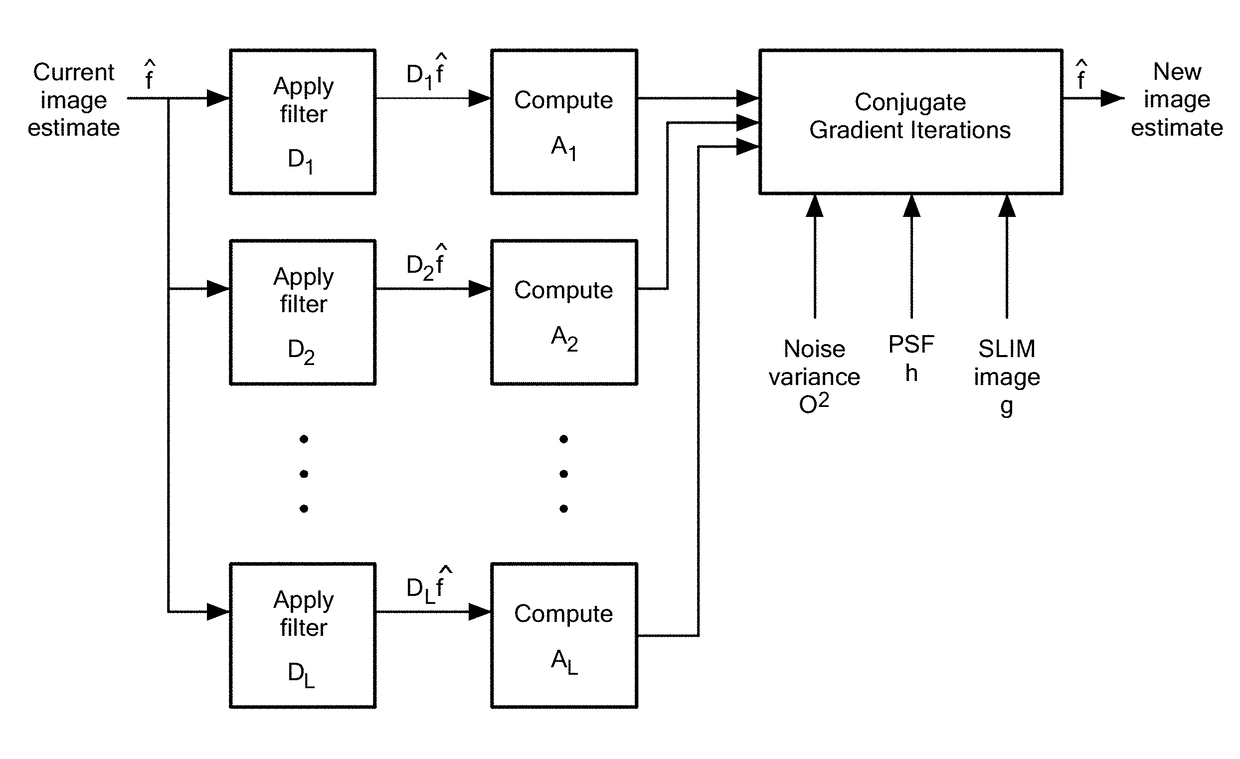Sparse deconvolution spatial light microscopy in two and three dimensions
a spatial light microscopy and deconvolution technology, applied in the field of three-dimensional imaging, can solve the problems of interference-based microscopy, fluorescence probes that are often harmful to living specimens, and difficult tomographic imaging of live cells
- Summary
- Abstract
- Description
- Claims
- Application Information
AI Technical Summary
Benefits of technology
Problems solved by technology
Method used
Image
Examples
examples
[0081]Application of dSLIM to complex field images obtained by SLIM quantitatively demonstrated the increase in resolution relative to undeconvolved images. All SLIM images were acquired using a white-light source (mean wavelength λ=530 nm); the field of view is 75 μm×100 μm with CCD resolution of 1040×1388. In all reported experiments, the specimen is relatively thin such that the whole image is in focus, and the degradation in the image is only due to a planar PSF. The PSF, depicted in Fig. (a), is obtained experimentally by imaging a sub-resolution 200 nm microbead treated as a point-source. Due to the high SNR provided by SLIM, this PSF closely matches the actual optical transfer function of the imager.
[0082]In all images obtained, the noise level was estimated within the range 10−7-10−6 (for a maximum signal value of 1), which is used as the value of the parameter σ2. The NAs of the objective and condenser are NAo=0.75 and NAc=0.55, respectively.
[0083]The experimentally measure...
PUM
 Login to View More
Login to View More Abstract
Description
Claims
Application Information
 Login to View More
Login to View More - R&D
- Intellectual Property
- Life Sciences
- Materials
- Tech Scout
- Unparalleled Data Quality
- Higher Quality Content
- 60% Fewer Hallucinations
Browse by: Latest US Patents, China's latest patents, Technical Efficacy Thesaurus, Application Domain, Technology Topic, Popular Technical Reports.
© 2025 PatSnap. All rights reserved.Legal|Privacy policy|Modern Slavery Act Transparency Statement|Sitemap|About US| Contact US: help@patsnap.com



